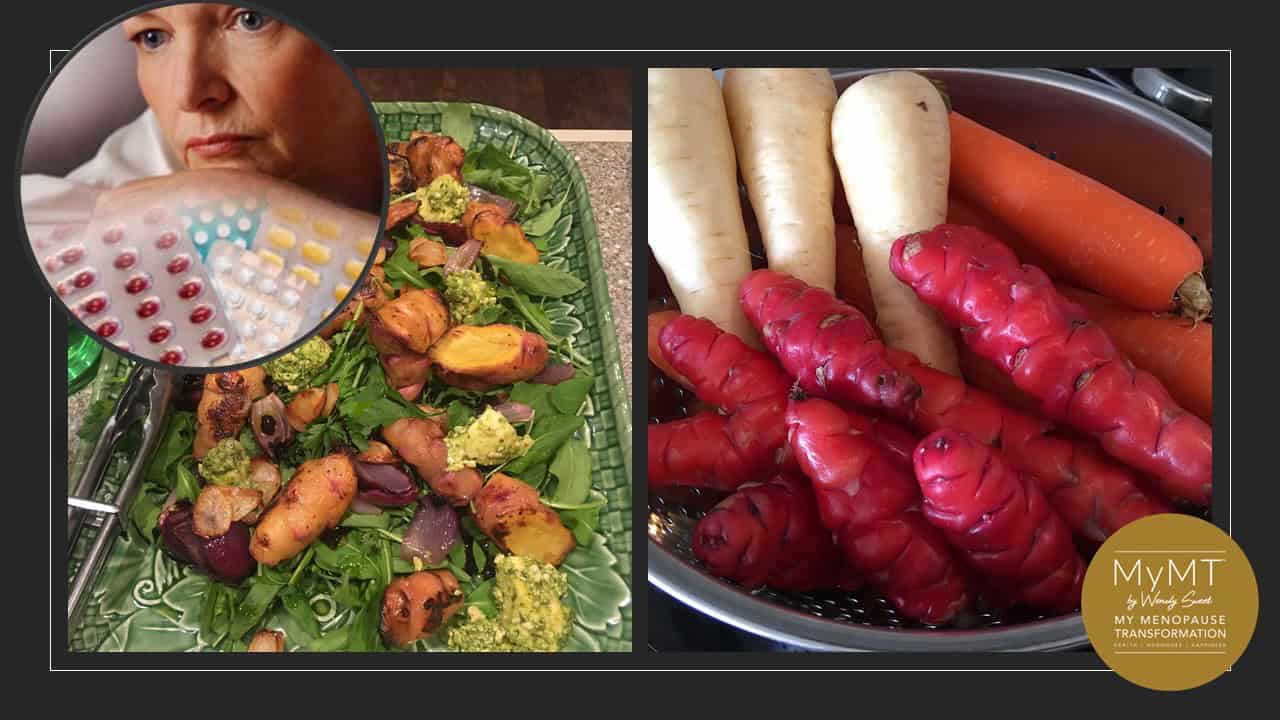If you’ve walked into your pharmacy or health supplement shop lately and cast your eyes over the plethora of menopause-related supplements and creams, you might have noticed that the ingredients list mentions wild yams. Or perhaps you are taking your ‘bio-identical’ hormone replacement therapy (HRT) and when you look at the ingredients, they mention wild yams. Go on, have a look.
Wild yam (Dioscoria) is a phytoestrogen. Phytoestrogens are plant derived compounds found in a wide variety of foods, most notably soy and plants such as yams. Numerous health benefits including a lowered risk of osteoporosis, heart disease, breast cancer, and menopausal symptoms, are frequently attributed to phytoestrogens, however, many are also considered endocrine disruptors, indicating that they have the potential to cause adverse health effects as well. It’s confusing isn’t it? For example, if you have breast cancer, then you might just like to stay away from wild yams (www.breastcancer.org).
Consequently, the question of whether or not phytoestrogens are beneficial or harmful to human health remains unresolved (Wu et al, 2005). As the authors state, ‘the answer is likely complex and may depend on age, health status, and even the presence or absence of specific gut microflora but clarity on this issue is needed because global consumption of phytoestrogens is rapidly increasing‘.
Phytoestrogens are present in numerous dietary supplements and widely marketed as a natural alternative to oestrogen replacement therapy in menopausal women. But both age and stage of menopause (and I might add, whether you are overweight and oestrogen dominant) are important considerations when it comes to menopause supplements and phytoestrogen intake. Asian populations have historically had lower rates of cardiovascular disease, menopausal symptoms, breast cancer (and other hormone dependent cancers), diabetes and obesity than Western populations (Patisaul & Jefferson, 2010), hence it is interesting to better understand why as many of you navigate supplements that are marketed to us during menopause. And yes, I was as confused as many of you may be too.
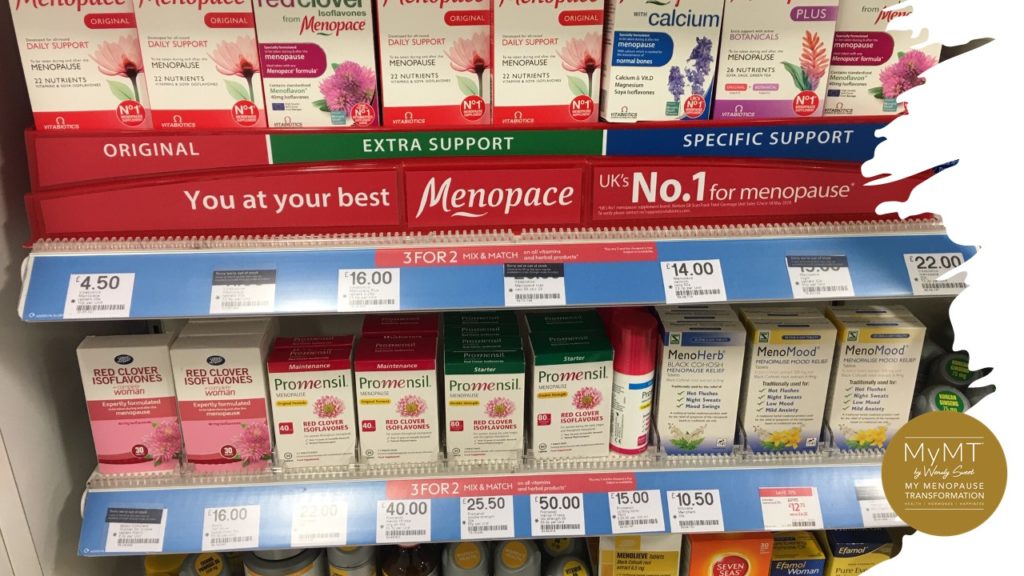
With more than 500 species of wild yam, some contain an ingredient called diosgenin. This chemical has a similar structure to one of your master steroid hormones (DHEA) which helps to make oestrogen. It’s because of this similarity in structure to DHEA that wild yams have become popular as an ingredient in menopause supplements and creams.
But can we just eat yams and get the same benefits? Well, all I can say is ‘it depends’.
Whilst real yams do have oestrogen-like activity, it takes a laboratory to convert it into a form that mimics oestrogen in the body. Furthermore, if you still have your ovaries and uterus as you move into peri-menopause (the start of your menopause transition), do you even need phytoestrogens from supplements? I ask this because in peri-menopause, you are still producing oestrogen, however, as you move towards post-menopause, your body is trying to reduce it’s dependency on this powerful reproductive hormone. Therefore, in post-menopause, the amount of oestrogen we have that benefits us, rather than harms us, can be a balancing act as too much synthetic oestrogen from medications and supplements (called xeno-oestrogens) at this stage of life, may actually be harmful – not only to your liver, but to your fat cells too. As I mention to numerouos women on my weight loss ‘Transform Me’ programme, if you are serious about weight loss in post-menopause as well as reducing breast cancer risk, then please be careful about taking synthetic hormone replacement and/or taking too many oestrogen-mimicking supplements. Your body may not need additional oestrogen and/or may just need the real food that supplys your body with phytoestrogens instead. You decide what works for you as well as talking to your Doctor.
When it comes to eating foods that help with post-menopause, soy is often given the green light, but what about yams? If you don’t need a lot of excess oestrogen, then perhaps move on from soy-based foods and add a few yams to your diet. In post-menopause, your oestrogen levels are lower, so keeping some oestrogen in your diet, may be helpful to you. This is because other areas of your body are affected by declining oestrogen production too. I’ve written about the effect of this on your blood vessels (vascular stiffness), your joints (they dry up), your liver (it changes in structure and function) your heart wall (loses some size), your muscles and of course, we’ve all seen how our skin dries up too.
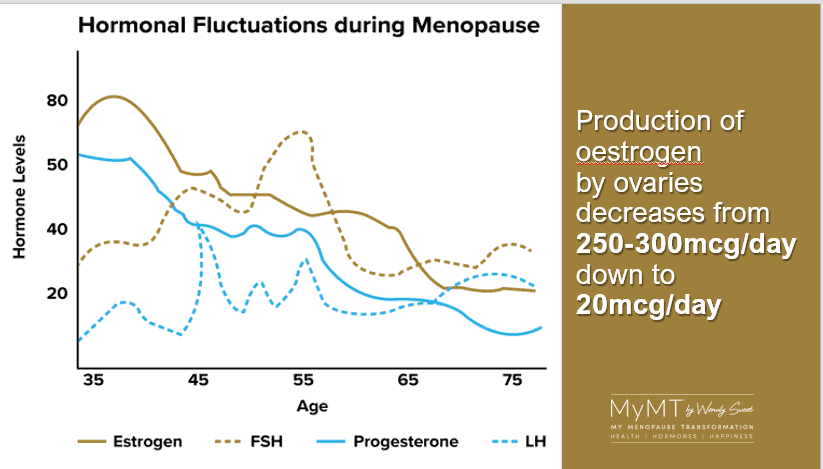
So, perhaps if we eat wild yams as women in China did for an interesting study on the effect of yams on post-menopause oestrogen levels, we might get the benefits of natural phytoestrogens without the expense of supplements. In an small investigation to see the effects of yam ingestion on lipids (blood fats), antioxidant status, and sex hormones in postmenopausal women, the authors, (Wu, Liu, Chung et al, 2005), found, that yes indeed, eating yams helps with our oestrogen levels.
Twenty-four healthy post-menopausal women were recruited to replace their staple food (mostly rice) with 390 gm (2/3 cup) of yam (Dioscorea alata) in 2 of 3 meals per day for 30 days. Whilst this is a lot of yams over the course of a day, and many of us would never go near this amount per day, in terms of whether we take up oestrogen compounds from foods, such as yams, the results were interesting.
The researchers took early morning fasting blood levels and urine samples from the women who were eating the yams (another group ate sweet potatoes). The blood and urine samples were analysed for lipids (fats), sex hormones, urinary oestrogen metabolites and stress biomarkers.
In the women who ate the yams, the results saw significant increases in oestrone (26%) and oestradiol (27%) in both blood and urine samples. These are two types of oestrogens. Oestrone is a hormone produced by the ovaries and is also produced by adipose tissue (fat) and the adrenal glands. It’s the major type of oestrogen hormone produced in any quantities in post-menopausal women who still have their ovaries, which is why I tell women on my 12 week Transform Me programme, who are overweight in post-menopause, to be careful about HRT and the accumulation of other sources of supplemental oestrogens (e.g. from soy powders and supplements). These excess oestrogen compounds are highly attracted to your fat cells. This is partly why women become oestrogen dominant and why I explain to women on my weight loss programme that they may actually be having too much oestrogen in their diet if they are overweight going into post-menopause. With the liver being the main organ for removal of excess oestrogens, and because our liver changes in structure and function with age, then we don’t want to overload it.
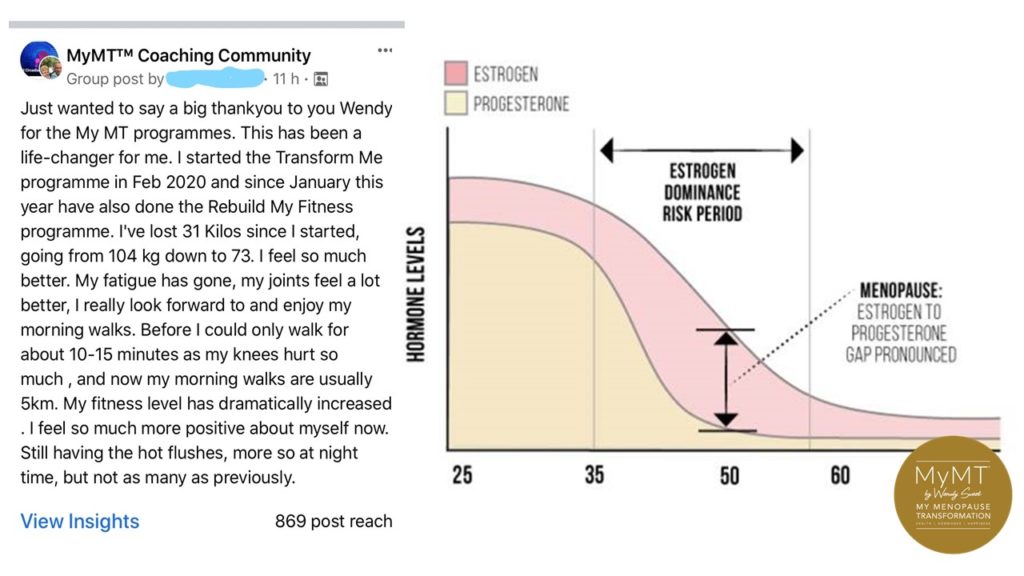
Root tubers are an important source of nutrients in our diet and yams are part of this group. Did you read my article about the post-menopause Hadza women of Tanzania and how Dr Katie Fitzpatrick reported that when they are out foraging for food away from their camp, they graze on tubers, berries and other foods they find? After reading the study out of China about wild yams and oestrogen in post-menopause, it’s interesting to see the connection and why Hadza women don’t report menopause symptoms that western women report experiencing.
Here in New Zealand, autumn leaves are falling and winter is approaching. That means our diet needs to change as well. Seasonal foods help to supply your body with the different nutrients it needs throughout the year. Although New Zealand yams will be different from those that the women ate in the study out of China, there are still great health benefits to women adding them to their diet. Yams are not only a great source of energy from healthy carbohydrates and B-vitamins (which help to reduce your brain fog), but they also give us phosphorus, iron (yams are high in Vitamin B2 which helps to prevent low iron levels and is good for those of you who are still menstruating) and amino acids (proteins).
Most importantly, yams are relatively high in potassium, which is an important for our cardiac health as we move through menopause. They are also high in fibre, which is great for your gut health and low in calories – around 135 grams of yams (2/3 cup) has only 60 calories.
Based on the thousands of women who join me on my 12 week coaching programmes, I find that two of the most confusing areas of menopause management is that of supplements as welll as food. I experienced that confusion too. Never before have there been so many different supplements promoted to us during our menopause transition and these get expensive. As well, different ingredients do different things, but many of the ingredients target our nervous system and/or the reduction of inflammation. But what is the role of real food in this equation and most importantly, with three different stages of menopause, then ‘what do we need ‘when’? This question isn’t being addressed by many supplement manufcturers and once again, women from peri-menopause to post-menopause are thrown into a ‘one-size-fits-all’ approach.
So, if you are a bit confused with your symptoms and what is going on, then if you haven’t already, then please listen to my Masterclass on Menopause or go to the website to read my articles and/or explore joining me on either of my programmes. Transform Me is my 12 week menopause weight loss programme and Circuit Breaker is for women who are thinner or leaner. Two different programmes for two different body-types. Come join me when you can, no matter where you live in the world, because our menopause transition matters to our health as we age.
Dr Wendy Sweet (PhD)/ MyMT™ Founder & Member: Australasian Society of Lifestyle Medicine.
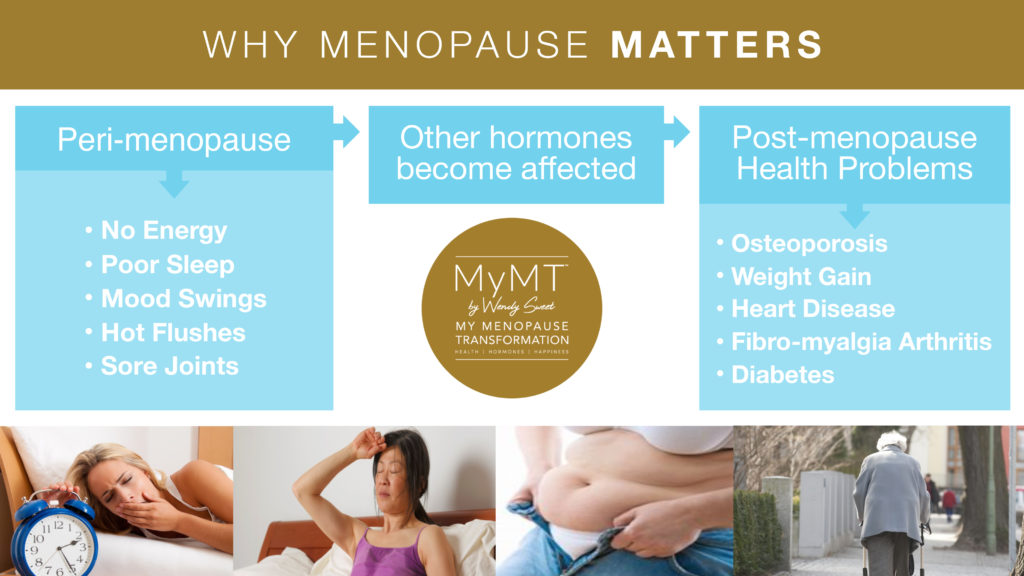
References:
Breast Cancer and Wild Yam Supplements. Sourced from: https://www.breastcancer.org/tips/nutrition/supplements/known/wild_yam
New Zealand Yams and Health Benefits. Sourced from: https://www.healthbenefitstimes.com/new-zealand-yam/
Patisaul, H. B., & Jefferson, W. (2010). The pros and cons of phytoestrogens. Frontiers in neuroendocrinology, 31(4), 400–419.
Wen-Huey Wu, Li-Yun Liu, Cheng-Jih Chung, Hei-Jen Jou & Tzong-An Wang (2005) Estrogenic Effect of Yam Ingestion in Healthy Postmenopausal Women, Journal of the American College of Nutrition, 24:4, 235-243.
Zeng M, Zhang L, Li M, et al. (2018). Estrogenic effects of the extracts from the Chinese Yam (Dioscorea opposite Thunb.) and its effective compounds in vitro and in vivo. Molecules, Jan 23;23(2).
